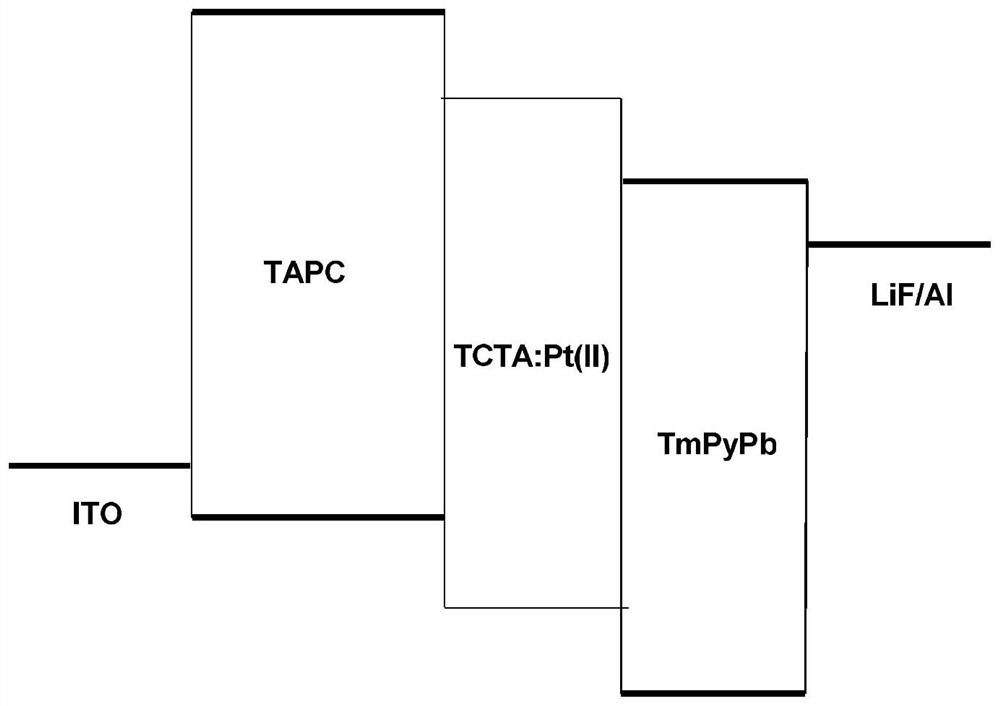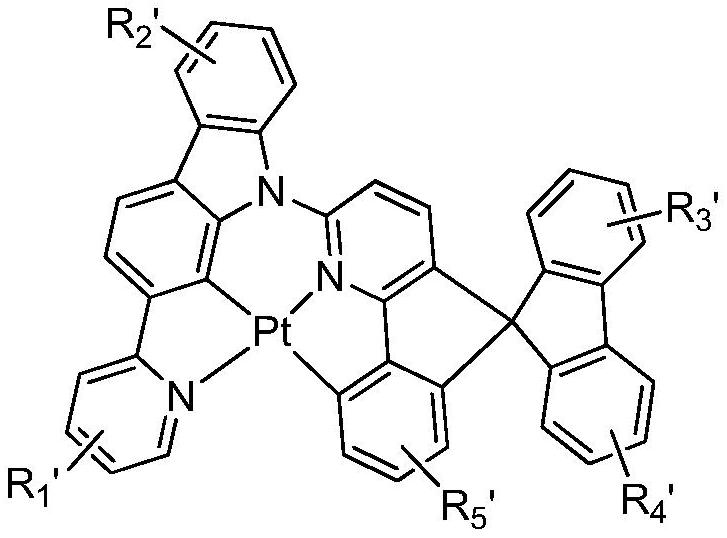Preparation and application of tetradentate platinum (II) complex
A complex and halogen technology, which is applied in the field of phosphorescent doped materials, can solve the problems of increasing the difficulty of complex separation and reducing the yield of complexes, and achieves the effects of low roll-off, good thermal stability, and low quenching constant
- Summary
- Abstract
- Description
- Claims
- Application Information
AI Technical Summary
Problems solved by technology
Method used
Image
Examples
preparation example Construction
[0048] The preparation method of above-mentioned complex, comprises the steps:
[0049] As shown below, the initial substrates S1 and S2 undergo Suzuki coupling reaction to obtain substrate S3, S3 and S4 undergo Buchwald–Hartwig coupling reaction to obtain substrate S5, and react S5 and S6 to obtain substrate S7, S7 and K 2 PtCl 4 The chelation reaction obtains the target platinum (II) complex TM.
[0050]
[0051] The initial substrates, intermediates, solvents and other reagents involved in the compound synthesis of the present invention were all purchased from suppliers well-known to those skilled in the art such as Anaiji, Bailingwei, and Aladdin.
Embodiment 1
[0053]
[0054] Synthesis of compound 3: get 24.6g (0.10mol) compound 1, 14.8g (0.12mol) compound 2, tetrakis (triphenylphosphine) palladium 3.46g (0.03eq., 3.0mmol), potassium carbonate 27.6g (2.0eq .,0.20mol) into the flask, add 150mL of dioxane, 50mL of water under nitrogen protection and heat to reflux for 8 hours. After stopping the reaction, cool to room temperature and remove the solvent by rotary evaporation, add an appropriate amount of water and ethyl acetate for extraction, collect the organic phase and dry, remove the solvent by rotary evaporation and use a flash silica gel column (mobile phase n-hexane / ethyl acetate=10:1 ) separation and recrystallization to obtain 21.0 g of the target compound 3 with a yield of 86% and a purity of 99.9%.
[0055] Synthesis of compound 5: Take 12.2g (50mmol) of compound 3, 13.0g (50mmol) of compound 4, 450mg of palladium acetate (0.04eq., 2mmol), 0.40g of tri-tert-butylphosphine (0.08eq., 4mmol), tert-butyl Potassium alkoxide ...
Embodiment 2
[0059]
[0060] The preparation method of Pt-2 is the same as that of Pt-1, the only difference is that compound 9 is used instead of compound 6. The molecular formula of compound 9 is as follows:
[0061]
PUM
| Property | Measurement | Unit |
|---|---|---|
| luminance | aaaaa | aaaaa |
| current efficiency | aaaaa | aaaaa |
| current efficiency | aaaaa | aaaaa |
Abstract
Description
Claims
Application Information
 Login to View More
Login to View More - R&D
- Intellectual Property
- Life Sciences
- Materials
- Tech Scout
- Unparalleled Data Quality
- Higher Quality Content
- 60% Fewer Hallucinations
Browse by: Latest US Patents, China's latest patents, Technical Efficacy Thesaurus, Application Domain, Technology Topic, Popular Technical Reports.
© 2025 PatSnap. All rights reserved.Legal|Privacy policy|Modern Slavery Act Transparency Statement|Sitemap|About US| Contact US: help@patsnap.com



